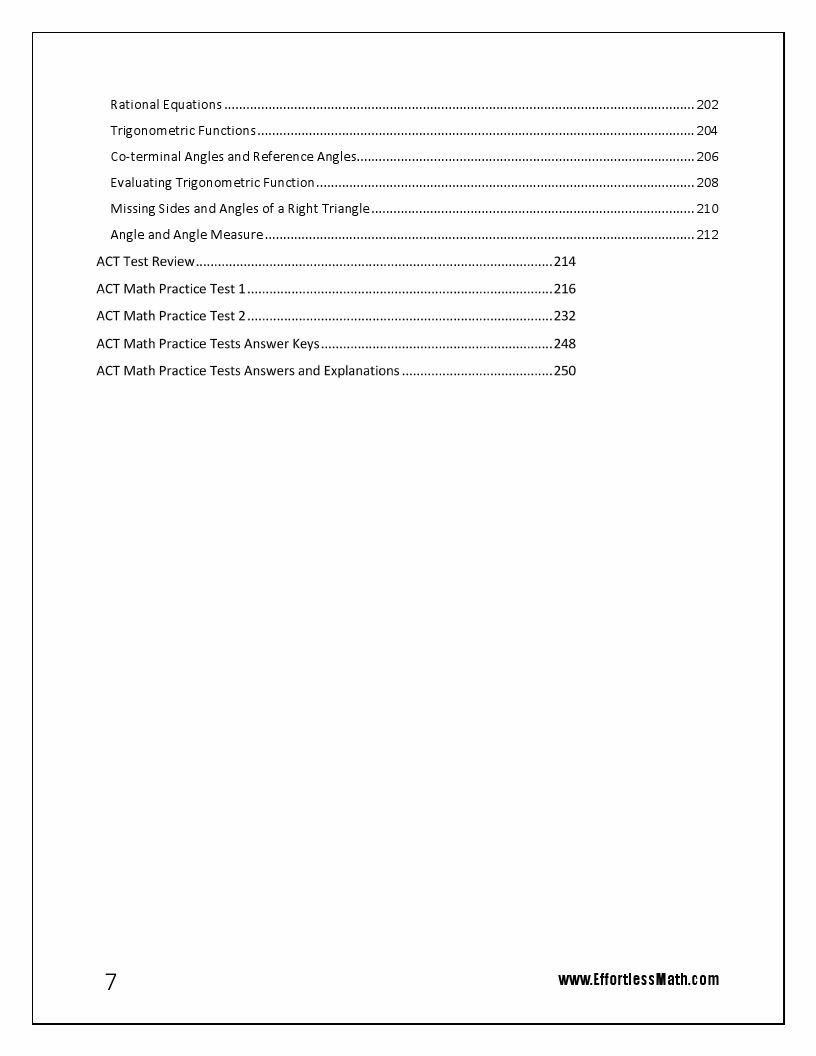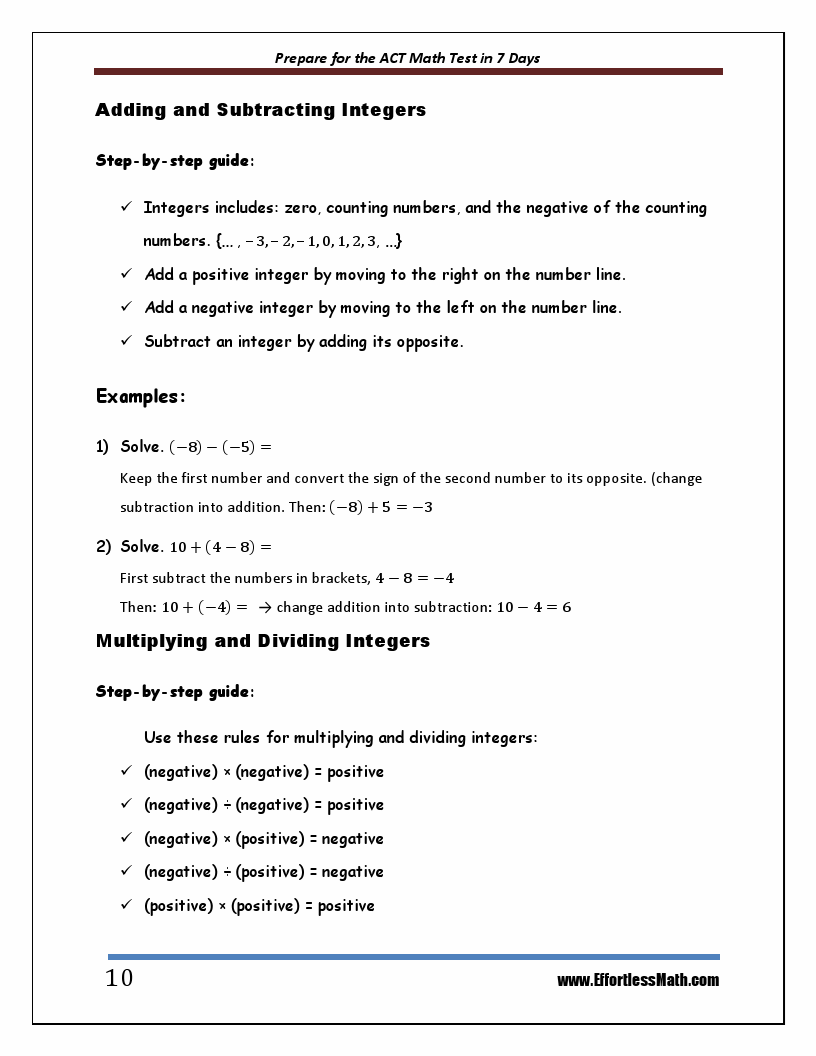
Must-Know Study Tips for the ACT® Math Section This chart will help you keep track of your progress during your ACT® review.

Let’s look at the breakdown to see what raw school you need in order to get the scaled score that you want. The number of questions that you get correct is your “raw score.” When the ACT® converts that number into a number out of 36, the result is your “scaled score.” Of course you would love to get a 36, but how does that work? Do you have to get every question right? Can you miss 5? However, as a general rule, questions 1-30 tend to involve more algebra, and questions 31-60 are heavier on geometry and trigonometry.
#ACT MATH PRACTICE TEST 60 QUESTIONS JOHN BAYLOR HOW TO#
Later on in this guide, we’ll discuss how to properly divide your time among different levels of questions in order to ensure that you answer them all – with time to spare.Īlgebra and geometry will be spread out all through the exam. The good news is that easy questions count for just as many points as difficult ones, and there is no penalty for guessing. As the exam goes on, questions get more complicated, necessitate more steps, and require a mixture of algebra and geometry.ĭon’t be intimidated. Although “difficulty” is relative, you’ll be able to see a clear difference between question 1 and question 60. Knowing where to find the easiest, least challenging questions will help you to maximize your time for the highest score.Īs a general trend, the math questions get more difficult over the course of the exam. The ACT® Math questions aren’t thrown together in a random order, which works to your advantage. In fact, you don’t need to know anything past Algebra II. You don’t need to brush up on your BC Calculus in order to ace the math section. When in doubt, check the official ACT® calculator regulations. Casio calculators beginning with CFX-9970G, Algebra fx 2.0, ClassPad300, and ClassPad 330.Hewlett Packard calculators beginning with HP 48GII, HP 40G, HP 49G, and HP 50G.Texas Instrument calculators beginning with TI-89, TI-92 and TI-Nspire CAS (non-CAS TI-Nspire is allowed).You can have a four-function calculator, scientific calculator or graphing calculator, except for: In addition to several sharp number #2 pencils, you’re allowed to have a calculator on the ACT®. However, if you prepare correctly, you won’t need one it would just slow you down. Unlike the SAT®, the ACT® does not give you a formula reference sheet. The ACT® Math section comes right after the 45-minute English section. However, as we’ll cover later in this guide, a smart test-taker will use that time a little differently. You have 60 minutes to answer 60 questions on the ACT® Math test, which breaks down to 1 minute per question. This guide will show you how to use that format to your advantage! Luckily, although the questions change from test to test, the format and the general content never change. All About the ACT® What’s the Test Format?īefore you can ace the ACT® Math test, you need to know how it’s structured.

We’ll discuss how the ACT® Math section is structured, how you can maximize your study time, how you can take advantage of hidden tips and tricks for a higher score, and how you can tackle each question successfully.Īre you ready to learn how to get a 36 on ACT® Math? Sharpen your pencil and let’s get started! I. It’s not about how hard you study, it’s about how strategically you study. Whether you’re a math whiz or whether math is your least favorite subject, you can get a 36 on the ACT® Math section.Īnyone can get a perfect score, and if you use this guide to study effectively, then you can too.


 0 kommentar(er)
0 kommentar(er)
